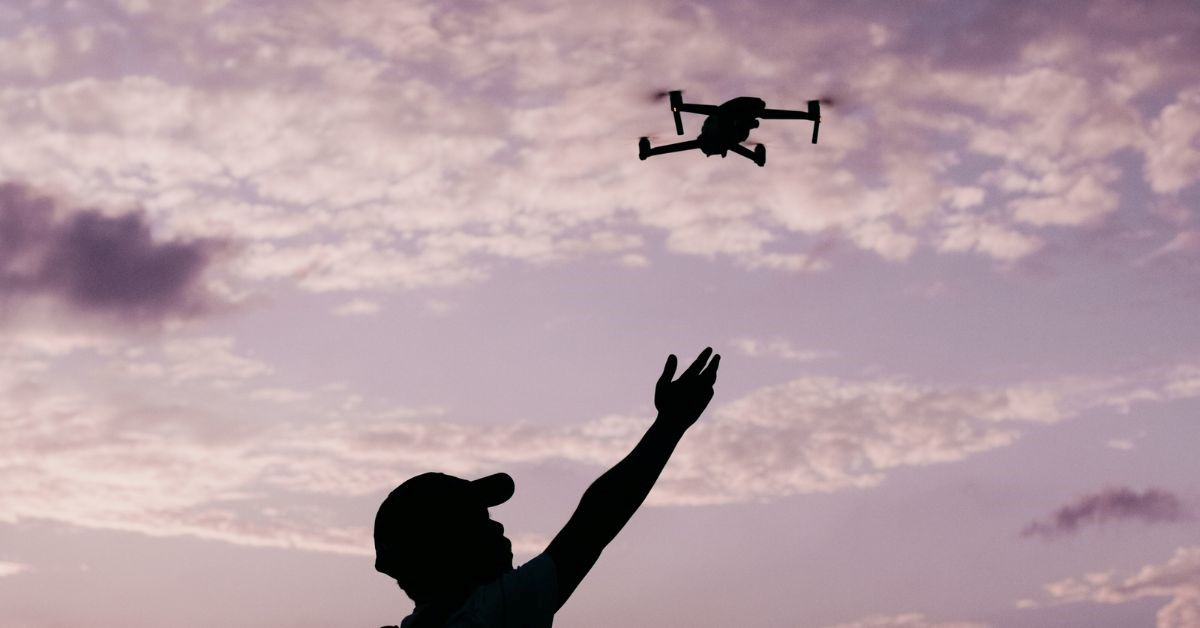Ethical Use of Drones in Wildlife Conservation

Drones, or unmanned aerial vehicles, are at the forefront of conservation technology. UAVs have the option of flying on a pre-programmed or remote-controlled route. The use of wildlife conservation drones in ecology and conservation is expanding. Drones have a long history in military service, tech companies, and the agriculture industry for mapping areas. Deploying a drone is more cost-effective than sending up a plane or helicopter. Drone operations can bridge the distance between personnel on the ground and helicopters in the air. Conservationists and environmental researchers can now access information, data, and photography that were once difficult or expensive.
Conservation Drones UAVs in Ecological Research
Conservation drones are known for mapping the species that live in a particular area and keeping an eye on places people couldn’t get to before. Wildlife conservation drones are in the early stages of development. But as these drones have become more prevalent in recent years, many research teams from different countries have devised new ways to use them.
Global warming and species extinction have affected human lives in the past decades. Scientists have since developed techniques for conservation to keep track of and better comprehend climate change and species extinction. Better data acquisition is now helping researchers understand the effects of:
- Continuous climate change
- Discovery of more species
- Countering poachers and illegal loggers
- Forecast evolution
- Possible future patterns of ecology
UAVs effectively monitor areas and the species that reside in them. Watching wildlife and not disturbing it poses a challenge for researchers. The ethics of wildlife drone use helps exercise the proper method to utilize drones around animals.
UAV’s Three Vital Roles in Wildlife Monitoring
Drone use for industrial purposes is a more familiar concept. Mostly, drone technology is typical for precision agriculture, industrial inspections, and real-estate photography. Drone surveillance in wildlife conservation efforts affects global ecology creating effective methods of species preservation and protection. Aerial vehicles’ adaptability makes them ideal for many jobs that help conservation initiatives. Drones aid in the eradication of animal poachers, the restoration of burned-out forests, and the surveillance of fragile wildlife populations.
Listed below are three vital roles of drones in wildlife conservation efforts:
1. Wildlife Surveillance
The measurement of animal population numbers is a crucial component of wildlife protection. Researchers find surveillance and data gathering challenging. The challenge poses for species that are too aggressive and territorial or flee when researchers approach. Conservationists require binoculars or telescopes to count from afar.
Aerial technology in conservation is straightforward and can quickly record overhead images of wildlife. Manual counts are unreliable or sometimes impossible due to other factors, including the weather and isolated areas. According to the Methods in Ecology and Evolution journal, drone-based counts were between 43% and 96% more accurate.
2. Anti-Poaching
Animal poaching is still a severe issue on a global scale. Elephants, rhinos, monkeys, and many more species are in danger of extinction because people prize specific body parts. The unlawful commerce surrounding many species has included them on the endangered species list. Drones are an essential tool for stopping poaching. Drones alert the presence of poachers in the area thanks to drones and rangers moving to stop them. UAVs fitted with thermal cameras and imaging software can analyze and collect data in real time, which help spots poachers. Drone monitoring of endangered species also protected them by alerting park rangers.
3. Forest Replanting
Every year, wildfires cause destruction in various regions of the world. Tree replanting is a time-consuming and expensive process. Fortunately, drones are making reforestation a quicker, less expensive method. Drones have faster tree planting rates compared to human workers. More immediate forest replanting and lowering carbon footprints are possible with UAVs.
Three Ethical Concerns of Drone Use in Conservation
Drones have definite conservation applications, but there are also significant ethical repercussions for UAVs for.
1: Avoid Wildlife Disturbance
The natural state of animals or how their behavior varies in response to environmental changes is vital for researchers. Animals in the wild are highly different compared to domesticated ones. Flocks of birds flee at the sight of humans, while large wild predators are highly territorial and easily provoked. It’s crucial to understand whether the UAVs disrupt the animals and, if so, in what way. Wildlife management with drones also has an impact. Different species in various situations are likely to react to the presence of a UAV in varied ways. Just because an animal doesn’t seem visually distressed doesn’t imply they aren’t under stress.
2: Wildlife Safety
Drones can fly to remote, distant areas that are usually inaccessible. However, if the drone gets damaged in the area, it can crash and potentially harm wildlife. Research that quantifies disturbance should be a priority as scientists create and improve UAV wildlife monitoring methods. Engineers and scientists are constantly developing better drone designs that avoid these scenarios. The use of drone equipment should minimize the stress and stimulus to wildlife. The impact of drones on wildlife research requires efficient maintenance, training schedules, and procedures based on animal ethics. Better civil aviation regulations help supervise better UAV usage on wildlife conservation and safety.
3: Human Safety in Wildlife Monitoring
Studying and protecting wildlife requires a lot of patience. Monitoring wildlife can also mean saving human lives as well. Wildlife officials can use drones to monitor wayward wild animals that enter populated areas. A practical method of reducing conflict between people and wildlife is drone surveillance. UAVs can navigate through dense woodland while utilizing artificial intelligence and thermal imagery to find a stray animal. Drone regulations for wildlife conservation prevent animal harm and alert authorities to attend to the situation quickly.
Drones in Conservation A Safer Place for Wildlife
Drone operators’ actions, intentions, and outcomes are all carefully examined as part of the ethical assessment of drone use in wildlife research. The effectiveness of drones in wildlife conservation is highly efficient for monitoring. Modern conservation drones also use thermal and long-distance focal-point cameras to monitor animals during the day and at night. In the fight to manage the priceless and more endangered species on Earth, doing so will increase our technical toolkit.
What is Wildlife Conservation?
Wildlife conservation mean saving animals, plants, and their natural homes. It helps to keep all living things secure and healthy. Animals and plants require their natural environments to survive, just as humans require a place to call home.
Why is Wildlife Conservation Important?
Animals and plants are part of a big chain. This chain keeps our planet clean and balanced. For example, bees help grow the food we eat by spreading pollen. If one part of this chain breaks, it can harm everyone, including humans.
Problems Wildlife Faces
Wildlife faces many problems. Forests are cut down, rivers get polluted, and some animals are hunted too much. These problems make it hard for wildlife to survive.
How Can We Help Wildlife?
Everyone can play a role! You can plant trees, avoid wasting water, and learn more about animals. Small actions like picking up trash can make a big difference.
Why Conservation Matters
Saving wildlife is not just about animals, it’s about us too. When nature thrives, humans thrive.
Contact Us
Thank you for your message. It has been sent.
Latest Posts
Social Profiles















